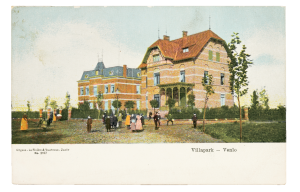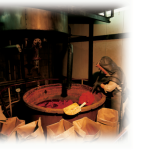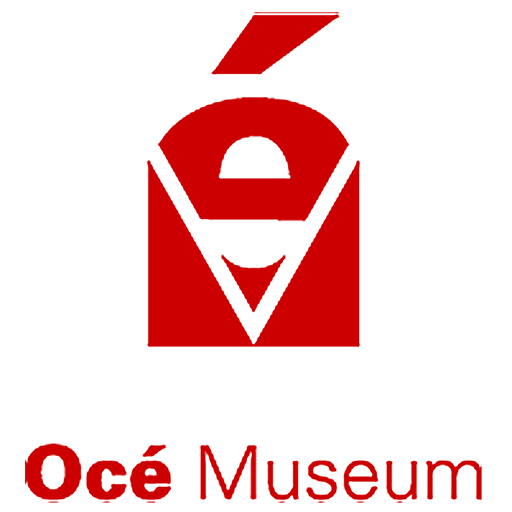Heyday
Twelve years after the first large order for margarine coloring, Frans van der Grinten joined his father Lodewijk in the pharmacy. It was 1889. Like his father, Frans had tremendous energy. The demand for colorants for margarine and butter was huge. To meet the huge demand for margarine and butter coloring, father and son introduced continuous production, initially in the pharmacy. Colorings for butter and margarine were produced with the general name boterkleur (“butter color”). Under Frans’ management, sales soared.
- In 1901 he built a house, Villa Anna, in Wilhelmina park, an exclusive residential area in Venlo North on the site of the old Ginkel fort. In 1902 Frans built the first production hall behind Villa Anna for the industrial manufacture of butter coloring.

The company entered a new period of prosperity, lasting until the outbreak of the First World War in 1914. The Netherlands remained neutral, but many foreign customers were difficult to contact and raw materials for the butter coloring were extremely scarce.
When the First World War ended in 1918, the company went into the red. The loss was around 12,500 Dutch guilders. The year 1918 was to be the only year with a negative operating result in the company’s history. The poor result was due to one-off events, and was immediately followed by two excellent years. Nevertheless, the poor year confirmed for Frans the need for the policy he had already introduced. So he went in search of further growth activities. - In 1917 he began with making dyes for curtains, but this was not a success.His safety caps were more successful. During the First World War butter coloring was made using synthetic raw materials, because natural raw materials were not available. People who worked with the synthetic dyes acquired a yellowish tint. In Venlo they were called “canaries”. Concerned for the health of his employees, Frans thought up various designs of safety hoods, which became an international success.

Later, during the Second World War, his son Karel was able to benefit from this invention. The Sicherheitsdienst arrested Karel for refusing to appoint employees for employment in Germany. He showed them a scientific article in German in which his father’s safety hoods were praised. He was then released. History does not recall whether this was thanks tot the safety hoods.. - The approach adopted after 1918, the only year in the company history with a negative result, showed the strong corporate culture that still characterizes the Océ Corporation today: fundamental research based on the company’s own financial resources to develop technologically innovative products, to prepare them for production and to put them on the market. After 1918 other markets besides butter coloring were found. The man who put all his energy into this was Louis van der Grinten, the eldest son of Frans. The third generation Van der Grinten presented itself.
